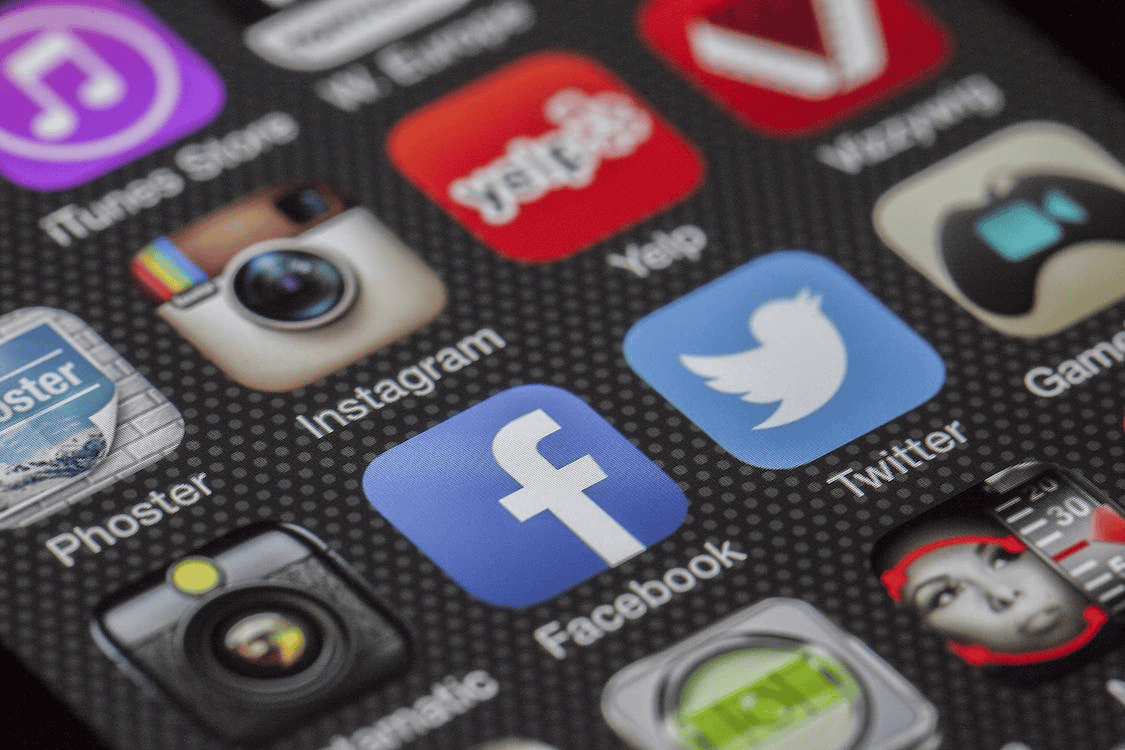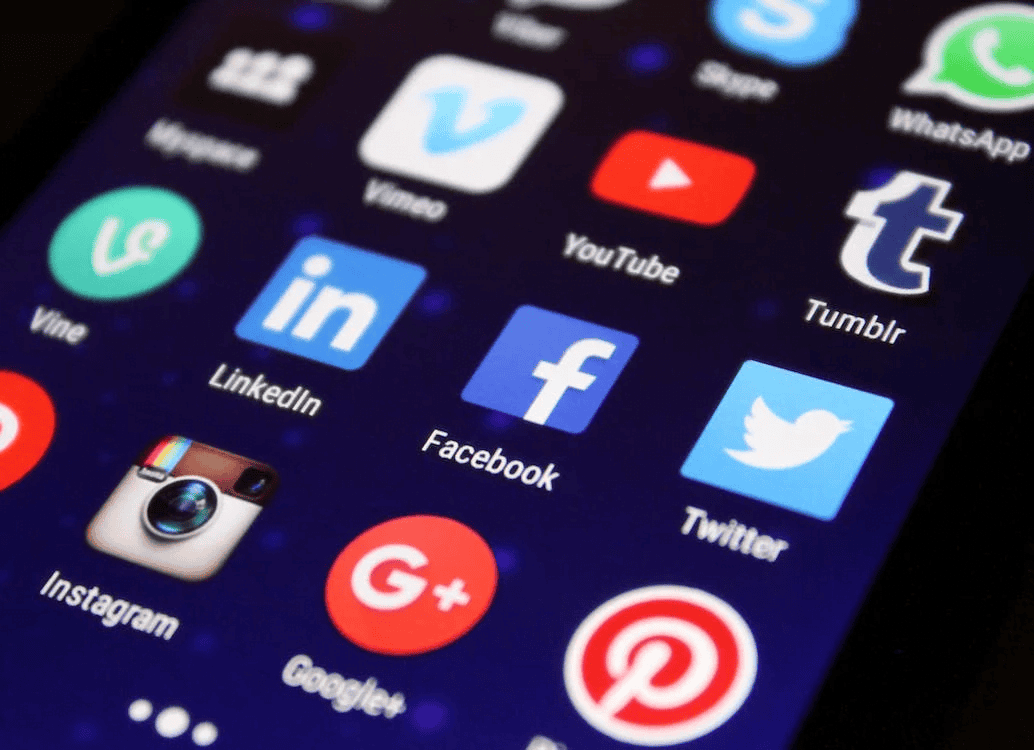The argument for and against the use of social media is an age-long discussion. But regardless of the side you belong to, you can’t deny that youths have a more virtual presence than before.
The world is a global village, as over 78% of teenagers have phones. As a result, they log into mobile spaces anywhere and anytime. Like most technologies, virtual communities have changed the way we live. It has fostered connection, entertainment, and various other functions. Likewise, it has its share of downsides. This article discusses social media’s advantages and disadvantages for students.

Advantages of Social Media for Students
Internet communities facilitate connection, information dissemination, and entertainment. It enhances creativity and awareness and cuts across different aspects of life. Let us take a look at its advantages below:
Opportunity To Network and Connect
Connectivity is one of the most significant advantages of internet communities. It lets you network with various people worldwide without leaving your comfort zone.
Undergraduates make friends, share thoughts, and stay connected with their families. More importantly, they easily contact tutors, share assignments, and solve them with friends.
The influence of virtual forums for connection transcends classroom use. It shapes politics, business, innovations, and careers.
Many undergraduates get political news primarily through virtual communities. Nearly 80% of all internet users are on Facebook. As a result, no one has a single marginal view. Together, social media users create publications and memes and break into the mainstream.
Undergraduates with side hustles or businesses reach prospects through virtual communities. They generate insights, stimulate demands, and create targeted product offerings. Unlike brick-and-mortar businesses, they have more flexibility thanks to digital marketing. In this dynamic landscape, many students leverage white-label services to enhance their product lines. Additionally, for those involved in academic pursuits, utilizing research paper writing services online can further streamline their workflows and manage their time effectively.
For example, students with exceptional writing skills often offer services in a virtual marketplace or create a website. Top providers like Edusson offer essay writing services and employment opportunities to skilled individuals. Write or sell your paper and make money. Additionally, others work as seasonal tutors or even offer online writing services, catering to students’ needs during peak academic periods. This flexibility allows them to earn income from social media while honing their teaching and writing skills.

Internet forums are effective integrated broadcast systems for disseminating information. It connects like-minded people and lets students flex their creative juices. The communities foster interaction in ways that cannot be replicated in the classroom.
It Aids Learning
Virtual communities are more helpful than most books and will teach you what the latter cannot. One of the reasons is that internet forums are updated every second. The communities promote self-directed learning and let undergraduates make independent decisions.
In a classroom, it is refined and guided to produce critical awareness and better learning. Students have more freedom to collaborate beyond the physical classroom. For those interested in furthering their education in AI, utilizing Microsoft AI-900 Practice Tests Dumps can be an excellent resource to prepare effectively. Besides working from anywhere, internet communities promote active learning.
Undergraduates hire writers on essay websites and free up their schedules for more predictive work. Writing services or the website that writes essays for you hire professionals and produce A-grade assignments. Online platforms shape and present information in ways that make more sense than traditional tools.
It could be through live streams, surveys, or shared articles. Popular tools that promote learning include Skype, YouTube channels, product management software, etc. For those involved in specialized fields or certifications, internet communities also provide access to specific resources like Microsoft PL-300 Exam Dumps, which help students prepare for professional certification exams by offering practice tests and study materials. This is especially beneficial for those in the field of data analysis and business intelligence, where certification can significantly enhance career prospects. For those preparing for such certifications, utilizing Microsoft PL-300 Practice Test Dumps can be a valuable resource.
You could also share relevant articles, case studies or tutorials within your product management tools where the entire product team can access startup resources. Integrated surveys in these tools make it easy to gather feedback on topics your team wants to focus on.
The Internet in the classroom creates more creative work and is more collaborative for undergraduates. They use it to identify real-world applications. Teachers also use visual tools like videos and infographics to communicate ideas quickly and stimulate discussions.
Undergraduates use the Internet to break complex materials into smaller segments for easy assimilation. Below are common ways students use communities for learning:
- Facebook page to create broadcast alerts and updates. They also use groups to streamline lectures and host discussions.
- Students use Twitter as a class message board. The platform has a 280-character limit. As a result, it forces users to think critically about how to pass information concisely and effectively.
- Instagram for photo essays and digital storytelling.
- Class blog for discussions. In the blog, teachers assign blog posts as essays. Undergraduates write new posts and use them to create digital content.
- Class-specific Pinterest board for organizing resources, lesson plans, and worksheets all in one place.
- Social media links make it easy to find the school. They also share photos and events around campus to showcase what to expect from a visit.
It Is a Source of Entertainment

Various entertainment options are available on internet communities. When undergraduates are feeling down, they turn to them to relieve stress. The comments and likes make them happy, and they play games.
Embattled undergraduates turn to several support groups for help against loneliness, depression, and stress. The communities create a feeling of elation and help them develop healthy relationships with others. As a result, it contributes to enhancing mental health.
Readily Available Free-Flow of Information
Undergraduates don’t need to wait until the next day before they ask questions they encountered in an activity. This is one of the effectiveness of social media in education and learning. In the teacher’s absence, they discuss themselves and propose a solution.
Plus, everyone has access to information, and this makes the learning process a continuous one. Undergraduates that can’t speak in front of a class without feeling awkward now have an opportunity to join discussions.
The internet promotes learning in situations where physical learning is not possible. It eliminates the need for transport and lodging and builds better participation. Apart from learning, students leverage it to make income and create brand awareness to increase their reach.
Disadvantages of Social Media for Students
Social media is like a coin with two sides. Despite its advantages, it is not without its disadvantages.
Undergraduates abuse and exploit social media platforms. As a result, schools are spending thousands of dollars to monitor how undergraduates behave on the internet. Below are some of its greatest risks:
It Can Lead to Addiction
Excessive use of the internet leads to addiction. Eventually, it distracts undergraduates from their studies, and they find it hard to focus their attention during lessons.

There are no clinical diagnosis criteria for social media addiction. But you know you are walking the path when you use it excessively or compulsively to improve your mood.
Social media has similar effects on the brain and makes us feel the same way when we eat or have sex. It triggers the brain’s reward system and releases dopamine. For some, the brain increases dopamine release when they get a like, retweet, or notification.
By sending a flood of dopamine along the reward pathways, it reinforces the need to satisfy the feeling next time.
Excessive use of online platforms triggers the dopamine loop. A cycle of motivation forces users to seek and crave rewards even more. Students turn it into a coping mechanism to relieve depression, stress, or loneliness.
Sadly, the compulsive use isolates them from others. It affects their real-life relationships, physical health, or school responsibilities. Here is how to know if you are spending too much time on the internet:
- Spending a significant amount of time browsing.
- Thinking about it when you’re not using it.
- Spending fewer moments with others to use it.
- Spending less time doing hobbies or other activities to use it.
- Experiencing anxiety and irritability when you can’t access it.
- Using it to cope with unwanted emotions.
Social media causes behavioral addiction. Instead of using it to cope with emotions, understand how you feel and learn coping skills to manage unwanted feelings. More importantly, talk to your counselor about it.
It Affects the Mental Health
Most contents on internet communities are far from the truth. The pictures are either edited or fabricated, and people don’t share low points in their lives. Instead, they share highlights.
As a result, it offers plenty of opportunities for comparison. Scrolling through your circle’s lives makes you envious and feel you can never be enough. It also reinforces the idea that perfection is possible and leads to self-consciously disliking your look. All of these contribute to mental health issues.
The internet is a dangerous place that amplifies the symptoms of anxiety and depression. It creates loneliness and isolation and is a precursor to suicidal thoughts. The platforms crowd out fulfilling activities and mess with your sleep. In the midst of the challenges posed by the internet, the best melatonin gummies can offer a ray of hope for those struggling with amplified symptoms of anxiety and depression.
Many students sacrifice their sleep and go to bed later, sleeping less or worse. The fear of missing out makes it hard to log off, leading to dangerous consequences.
Cyberbullying and Oppression
Many social media users are keypad warriors. Since the platforms allow people to remain anonymous, they tease and hurt others.
Many fake accounts target teenagers and bully them through hurtful messages. Victims suffer anxiety, depression, and other mental issues. It also affects their self-esteem and causes isolation. Common examples of virtual bullying include:
- Spreading rumors.
- Name-calling.
- Spreading private information without consent.
- Discrimination, humiliation, and harassment.
- Cyberstalking.
- Social exclusion, etc.
The internet brings unwanted attention. Regardless of age, everyone can be an influencer. But it also opens them to harassment through the DM or comment section. Youngsters fall to manipulation and are prompted to take extreme actions.
Lack of Emotional Connection
The internet has crippled many people’s interactions. Communication skills are deteriorating, and it is reducing focus. People who spend time in chat rooms live less satisfied lives than others who interact face-to-face.
Many keypad warriors don’t have the gut to physically repeat what they say on the internet. As a result, it creates a misconception of how low humanity is. People spread hate and negativity with pride and change reality with trends. People in this category can’t even format an essay title or write a coherent post. It ultimately distracts undergraduates from learning and academic activities.
One of the biggest drawbacks of the internet is relying on it for all contacts. People don’t have any idea how to deal with people practically. They don’t practice proper communication skills and are dumb at reading social cues.
Unknown to many, 10,000 virtual friends or followers don’t translate to actual friends. There is a whole world outside the chat box; most undergraduates are missing out and at a disadvantage.
Inappropriate Content
Most internet content is not regulated, and the ones with regulations are easy to bypass. As a result, underage children are exposed to inappropriate content. A pornographic ad could pop up while scrolling a newsfeed and lead the user to the website. Eventually, undergraduates might get mentally disturbed or become confused.
Privacy Problems
People put all forms of information in public, including private ones. A hacker or an average internet user gathers enough data to spy on others, steal identities, and attempt scams. Companies also sell data in ways that undermine personal privacy, and there is a possibility of receiving physical or mental harm.
The Role of Social Networks in Education
Every state has a unique set of continuing legal education requirements which can be viewed on NBI. The internet plays a huge role in education if used the right way. It offers flexible marketing opportunities, and fosters collaboration and learning. In a nutshell, the benefits affect parents, teachers, and undergraduates.
How It Helps Parents
Digital technologies improve communication between parents and their wards and teachers. They receive class news, private messages, and updates and monitor their children’s performance. Parents also use it to communicate with the school and as a resource for solving assignments.
How It Helps Teachers
The internet is a great resource for teachers looking to improve their teachings and connect with other educators. They share courses on classroom teaching techniques and learning styles and enhance the classroom experience.
Teachers use social networking to stay abreast of changes in content and curriculum and get information. But more importantly, they use it to build rapport with students. They share assignments, initiate discussions, and manage workflow with ease.
Many educational institutions are adapting to changing times and incorporating virtual forums. Schools investing in eLearning software development create customized digital learning platforms that enhance student engagement and track educational progress more effectively. Many educational institutions are adapting to changing times and incorporating virtual forums. Schools use it to provide opportunities to improve learning methods and make them more convenient. It also broadens student perspectives on different subjects, and schools use monitoring tools to extra data.
Final Thoughts on Social Media – Advantages and Disadvantages for Students
Social media is invaluable in aiding communication between teachers and undergraduates. It provides unlimited resources and facilitates giving and receiving feedback anytime. The platform bridges the gap and aids networking and collaboration. But despite its upsides, we must remain cautious when using internet forums. The overuse of this technology is detrimental to mental health. It contributes to feelings of anxiety, depression, and lack of self-esteem. But in a controlled environment, the advantages of internet communities outweigh the disadvantages.


